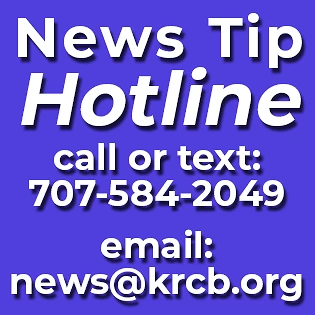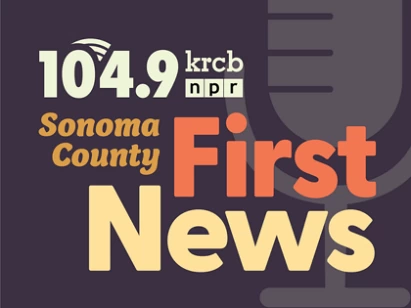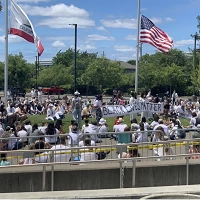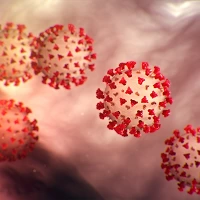 Santa Clara County’s Public Health Department is providing detailed information about COVID-19 cases, deaths and hospital capacity on several data dashboards available online.
Santa Clara County’s Public Health Department is providing detailed information about COVID-19 cases, deaths and hospital capacity on several data dashboards available online.
The county has also assembled a variety of COVID-19 resources, as listed below and found at sccphd.org/coronavirus.
Food Distribution Map
The City of San José has launched a food distribution map (bit.ly/SCCFoodMap) with important information on countywide food distribution sites to ensure food security for those in need. In collaboration with the County of Santa Clara, non-profit community partners, school districts and faith-based organizations, the Silicon Valley Strong coalition now has 129 food distribution sites operating Monday through Friday. Visit siliconvalleystrong.org for more information on how to access food resources or to donate. Also, call 2-1-1, a 24-hour multi-lingual service, or text your zip code to 89821.
CARES Act Economic Impact Payments
The Treasury Department and the Internal Revenue Service announced that distribution of economic impact payments will begin in the next three weeks and will be distributed automatically, with no action required for most people. However, some taxpayers who typically do not file returns will need to submit a simple tax return to receive the economic impact payment. More information can be found here.
Eligible taxpayers who filed tax returns for either 2019 or 2018 will automatically receive an economic impact payment of up to $1,200 for individuals or $2,400 for married couples and up to $500 for each qualifying child.
Tax filers with adjusted gross income up to $75,000 for individuals and up to $150,000 for married couples filing joint returns will receive the full payment. For filers with income above those amounts, the payment amount is reduced by $5 for each $100 above the $75,000/$150,000 thresholds. Single filers with income exceeding $99,000 and $198,000 for joint filers with no children are not eligible. Social Security recipients who are otherwise not required to file a tax return are also eligible and will not be required to file a return.
In the coming weeks, Treasury plans to develop a web-based portal for individuals to provide their banking information to the IRS online, so that individuals can receive payments immediately as opposed to checks in the mail.
New Aid for Small Businesses
California Small Business Relief Payment Plans: Effective April 2, 2020, small business taxpayers, those with less than $5 million in taxable annual sales, can take advantage of a 12-month, interest-free, payment plan for up to $50,000 of sales and use tax liability. Payment plan requests can be made through an online portal coming soon.
Paycheck Protection Program: Small businesses with 500 or fewer employees—including nonprofits, self-employed individuals, sole proprietorships, and independent contractors—can secure funds to pay up to 8 weeks of payroll costs including benefits. Funds can also be used to pay interest on mortgages, rent, and utilities. Funds are provided in the form of loans that will be fully forgiven when used for payroll costs, interest on mortgages, rent, and utilities. Small businesses and sole proprietorships can apply starting April 3. Independent contractors and self-employed individuals can apply starting April 10. Businesses are encouraged to apply as quickly as possible because there is a funding cap.
Employee Retention Credit: The Treasury Department and the Internal Revenue Service have launched the Employee Retention Credit, designed to encourage businesses to keep employees on their payroll. The refundable tax credit is 50% of up to $10,000 in wages paid by an eligible employer whose business has been financially impacted by COVID-19. The credit is available to all employers regardless of size, including tax-exempt organizations, except for government entities and small businesses who take small business loans. Qualifying employers must fall into one of two categories: 1) business is fully or partially suspended by government order due to COVID-19 during the calendar quarter, or 2) gross receipts are below 50% of the comparable quarter in 2019. The amount of the credit is 50% of qualifying wages paid up to $10,000 in total.
Open for Business Hub: A listing of technology companies that are helping small businesses by enabling remote work throughout this period.
New Guidance for Temporary Federal Sick Leave
The Treasury Department and the Internal Revenue Service have released new guidance for the Families First Coronavirus Response Act (FFCRA) which provides small and midsize employers refundable tax credits that reimburse them, dollar-for-dollar, for the cost of providing paid sick and family leave to their employees for leave related to COVID-19.
Employees experiencing symptoms of COVID-19 who are seeking a medical diagnosis or are being advised by a health care provider to self-quarantine are entitled to paid sick leave for up to two weeks (up to 80 hours) at the employee’s regular rate of pay, or, if higher, the Federal minimum wage or any applicable State or local minimum wage, up to $511 per day and $5,110 in the aggregate.
Employees caring for children whose school have closed are entitled to paid sick leave for up to two weeks (up to 80 hours) at 2/3 the employee’s regular rate of pay or, if higher, the Federal minimum wage or any applicable State or local minimum wage, up to $200 per day and $2,000 in the aggregate.
More information can be found in this FAQ. U.S. Department of Labor Wage and Hour Division will post a recorded webinar on Friday, April 3, 2020, to provide interested parties a more in-depth description and help them learn more about the FFCRA.
Hate Crimes PSA
An unfortunate side effect to community tensions around COVID-19 is a rise in hate crimes. Santa Clara County District Attorney Jeff Rosen has released a PSA condemning these acts of violence and encouraging victims and witnesses to contact their local law enforcement agencies to report them. There are translations in Chinese, Spanish, and Vietnamese.
Guidance on New Construction Rules
Among the changes in the updated Public Health Order this week were rules further restricting construction activity. In general, most construction must cease through May 3. There are some exceptions for homeless shelters and residential housing containing at least 10% income-restricted units. There are also exceptions for essential healthcare and public works projects.
The Public Health Department has created a specific section in its FAQs for construction. The City of San Jose also created its own Construction Guidance webpage that may be helpful for many who have questions related to this issue.
FAQs about the Local Health Officer Shelter in Place Order
The county makes regular updates to the FAQ documents for the local Public Health Order as new information becomes available. These materials can be accessed in the following languages:
Shelter in Place FAQ-Vietnamese
More information and regular updates can be found on the County Public Health website and the CDC website.
If you as a labor, business, faith, nonprofit, or community leader have questions or requests for information, please contact:
Any school-related questions should be sent to
Elected or public officials with questions should contact:

 Live Radio
Live Radio



















